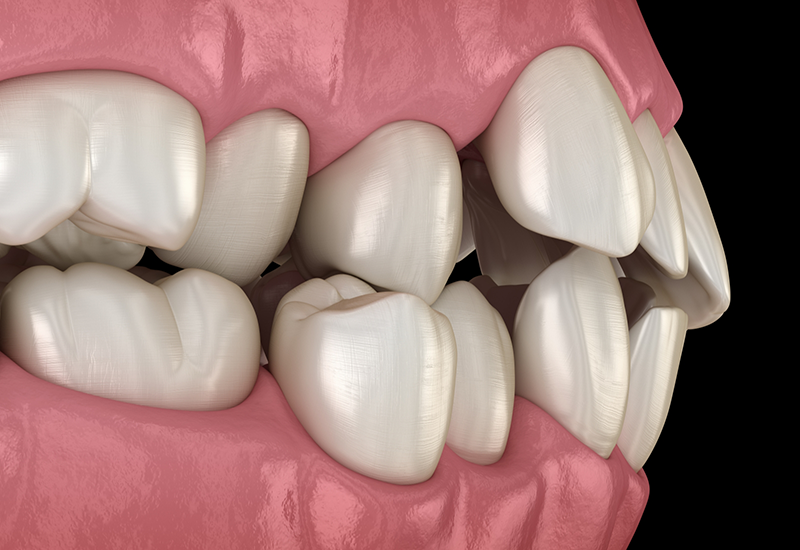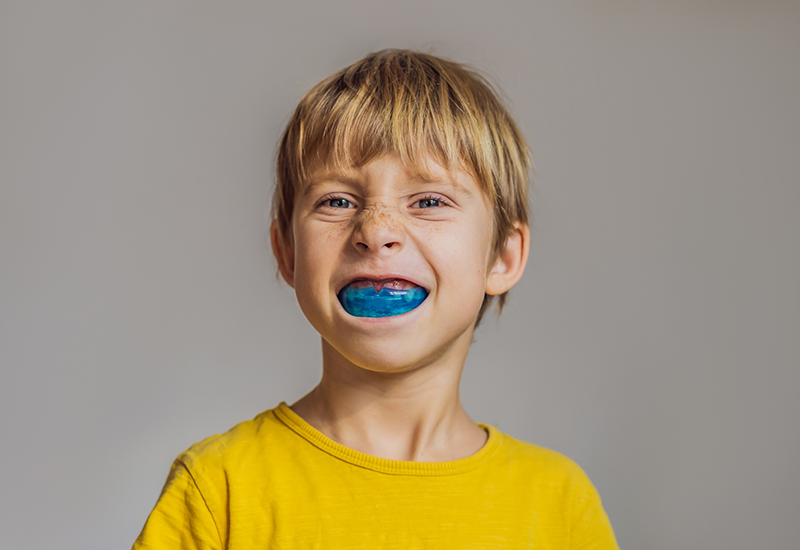Myofunctional Therapy & Myobrace Wauwatosa
Safeguarding Oral Development for Better Health
Children who experience problems with oral and facial development will often practice mouth breathing, thumb sucking, or even tongue thrusting. The continual practice of these habits can lead to more serious oral health problems in the future if they’re not treated early on. This is why our team at Elmbrook Family Dental of Wauwatosa offers myofunctional therapy – a solution that helps little ones to correctly use their facial and oral muscles. If you notice that your child practices any of these habits, call us to schedule an appointment with a member of our team.
Why Choose Elmbrook Family Dental of Wauwatosa for Myofunctional Therapy?
- Kid-Friendly Services to Improve Oral Health
- Dental Team That is Compassionate and Caring
- Devoted to Early Prevention to Minimize More Serious Issues
What Is Myofunctional Therapy?

Does your child struggle with any of the following?
- Difficulty breathing
- Poor facial and body posture
- Misaligned bite
- Mouth breathing
- Tongue thrust
- Lip competence
If so, myofunctional therapy may be the right plan to help them overcome these developmental issues. As a program that incorporates physical exercises that are designed to address the orofacial myofunctional disorders (OMDs) listed above, children can begin to notice a difference in the way their face, neck, and soft oral tissues function, creating better tongue position and oral posture. Also, children can begin to breathe through their nose instead of their mouth and swallow with ease.
Why Be Concerned About OMDS?

OMDs can be concerning to parents because of the long-term consequences that can occur as a result of avoiding treatment. Some of the most common include:
- Sleep-disordered breathing
- Frequent headaches
- TMJ disorder
- Developmental issues concerning the jaw, teeth, and facial structures
- Chronic neck, back, and facial pain
By inquiring about orofacial myofunctional therapy (OMT), you can take the necessary steps to help your child avoid extensive oral procedures in the future. It is believed that when working with qualified professionals, OMT is highly effective (80-90%), leading children to exhibit better oral posture, swallowing, breathing, and more.
What Is Myobrace?

If your child has crooked teeth but is not ready for braces, we can suggest Myobrace – a unique, preventive system that is used as a form of pre-orthodontic treatment. Using various oral appliances, a child wears them for a few hours (1-2) each day as well as overnight. The device helps to further improve unhealthy oral habits while also applying just enough pressure to align the child’s teeth and jaws by expanding their arch.
To address issues related to a child’s jaw and dental development, Myobrace Activities, an educational program, can be used to teach appropriate exercises that help improve breathing, swallowing, tongue positioning, and other OMDs.
If you want to learn more, please reach out to the Myofunctional Therapist by checking out their site below:
Myofunctional Therapy FAQs
What Is the Myofunctional Therapy Process?
The first step of myofunctional therapy is an initial assessment. Your child’s therapist will evaluate how their oral and facial structures are functioning. The goal is to identify patterns and habits, such as mouth breathing or incorrect tongue posture, which need to be addressed.
After the evaluation, we will be able to create a custom treatment plan, which typically involves a series of exercises that aim to retrain the oral and facial structures. We want them to function properly so our patients can enjoy improved overall health and a lower risk of future problems.
Sessions are usually less than one hour long and can vary in their frequency. As your child makes progress, we might introduce new exercises and activities to help them continue improving.
How Long Does Myofunctional Therapy Last?
The number of sessions necessary depends on each individual’s needs. Some patients make progress very quickly and require a shorter overall treatment term, whereas others require more time to reach their goals.
Our initial treatment plan may include a specific number of sessions, but it can be adjusted. Typically, a course of myofunctional therapy lasts at least a few months.
Is Myofunctional Therapy Covered by Insurance?
Myofunctional therapy is usually not covered by insurance. However, there are some exceptions. Your family might be eligible for coverage if you get preauthorization from your insurance company. In order to do so, you may need a letter that establishes that the treatment is medically necessary.
Call us to learn more about how we might be able to help you use your benefits.
Does Myofunctional Therapy Hurt?
Myofunctional therapy is non-invasive and generally painless. However, it is common for patients to experience muscle fatigue and possible soreness as they train their oral structures to work in a different way. The discomfort is usually temporary; it should disappear as your child’s muscles become stronger and adapt to the new ways in which they are being used.
How Can I Tell If My Child Needs Myofunctional Therapy?
Many children need myofunctional therapy if they have a lip or tongue tie. Other signs that your child might need this treatment include:
- Mouth breathing
- Difficulty with speech
- Visible tongue thrusting when swallowing or speaking
- A misaligned jaw or teeth
- Prolonged thumb-sucking or pacifier-sucking
- Poor sleep
- Snoring
- Grinding or wear on the teeth
After an evaluation, our team can confirm whether or not your child might be able to benefit from a course of myofunctional therapy.

